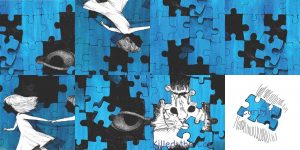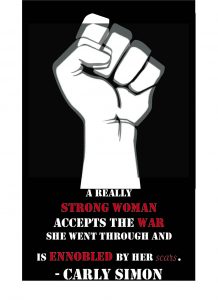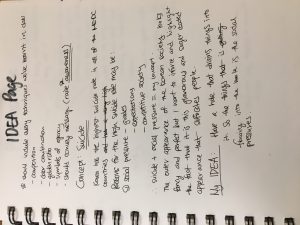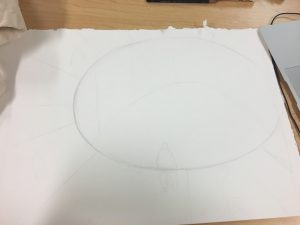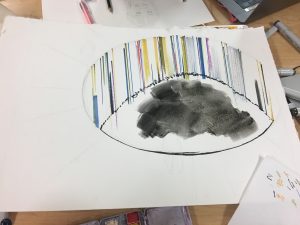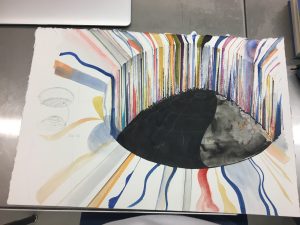Category Archives: Courses
This is the parent category of all of the years and individual courses represented in your learning portfolio.
Time – Final Print
Time – Narrative
Time – Typography
Time – Sound Vid
Identity
The last few months in New York has been a devastating experience both physically and mentally. I was overwhelmed by the freedom I had never had before, soon to feel the responsibilities that followed along with my freedom. Living by myself has allowed me to find my true self without being influenced by others, and thus the previous few months has been a journey to finding my true self. I am originally from South Korea, but grew up in various different countries throughout my developing years. Some of the countries I’ve lived includes my motherland Korea, China, Singapore, UK and more. Because of the multifaceted countries and cultures I’ve lived in, I was always forced to change and possibly act like I fitted in with these different environments. And this may be the main reason why I was so troubled and overwhelmed during the last few months in Parsons; trying to find my identity.
Unintentionally and interestingly, all the artworks I created for my studio’s Bridge projects had a recurring thematic idea of identity. The first project (which was a photography piece) dealt with idea of dual identity, moving on from being a child to an adult. Then came the more generic project: to create Postcards about a place of interest in New York. As I was heavily influenced by Patti Smith’s Just Kids, I decided to create the postcards about East Village, and the architectures of East Village. The third project was a more personal piece compared to the previous project where I decided to create and accordion book using two distinct illustrated images of black and white. This piece was heavily influenced by Persepolis, and its use of black and white simple illustrations. Like the movie, my project too was about our roots and the inevitabilities of being set free from our origins. These previous three project lead to the creation of the last project which will also deal with the concept of identity and no matter how much we struggle to be individual, our origin and culture will always influence us as individuals.
I believe it is too early to say that I have found myself completely, as I am a metamorphosing creature that is ever changing. Thus my next steps will be a continuation of my previous steps, and finding out what I truly want to do and be. Currently, I am interested in pursuing my studies in Fashion. Although not heavily interconnected with Fashion, these past projects I’ve done in studio will be the footsteps to my pursuit, as Fashion deals with the outer appearance of people, which is the visual identity of an individual.
The Void
The Void
A hallow hole portrayed via line contours using mainly 4 colors, I decided to create an artistic depiction of suicide. Suicidal rates within the MEDCs have drastically increased along with the rapid economic development of these countries, and South Korea (my motherland), unfortunately has the highest suicidal rate within the countries listed with high living standards. Regardless of gender, social status and or age, many people feel victimized and threatened to commit suicidal acts or have such thoughts due to various social pressures.
Using the golden ratio of 1: 1.618·, I created a void that seems to be draining the surrounding environment which is shown through the chromatic contour lines that concaves in to the hole. The hole in this piece of work represent the temptation to give up one’s life due to social and environmental pressure. Thus, in order to make the hole appear somewhat positive and alluring, I used chromes of high intensity hues in red, blue, green and yellow. The hallow of the hole depicted in black and shades of saturated greys show the reality of committing suicidal acts; which are dark and leave regrettable consequences. The occasional monuments and objects that are positioned around the hole convey social pressure that is forcing people to be allured into the hole.
Through this piece of work, I aim to create a piece of work that not only depict the issue of suicide, but the cause of it. I also purposely used vibrant colors to show suicide in the perspective of those affected by it, and how to them, suicide may seem like the best option. Thus, allowing people to understand and ultimately help those suffering from such a state, instead of neglecting them.
Expressive Portrait
The Homeless
Giving money to the homeless is an economic crisis of the heart. An act to relieve our guilt rather than to fix the underlying crisis of poverty. It is a tug-of-war between the instinct to alleviate suffering and the knowledge that a donation might encourage, rather than relieve, the anguish of the poor. Studies on homeless income from the Department of Housing and Urban Development show that the average beggar who dedicates his time overwhelmingly to begging can make between $600 and $1,500 a month. However, studies also find that 60% of the homeless respondents admitted to using all the money earned within the next 24hrs. Given the likelihood of self-reported bias, the given number could be even higher. Panhandlers often have no way to save their money, being incentivized to spend their daily earnings quickly. Thus, creating a tendency to spend on short-term relief, rather than long-term needs, which can feed on their dependency on alcoholic and or drug relief.
Giving to beggars induce bad long-term incentives. As example, when traveling to an LEDC, many beggars can be located in tourist attractions (as tourists are better sources of income to these people). However, giving to the needy does not make these local beggars richer, they only multiply. An economist Tyler Cowen once wrote “The more you give to beggars, the harder beggars will try. [….] which again limits the net gain to beggars”. Many homeless charities, with support of researches and surveys, suggest that the best way the public can help the homeless is to make donations to a homeless charity. This allows the homeless to be benefited with the proper necessities rather than the risk of spending on short-term relief when they’re to be given cash.
It is an inevitable fact that people who beg are often the most vulnerable in our society, and many will be struggling with relative poverty. However, the most visible aren’t the only ones that requires support. There are more “invisible” homeless who are actively seeking jobs rather than to be a “career panhandler”. “I hit the streets looking for work, my only resume a stint in a factory, vestiges of an incomplete education, and an immaculately starched waitress uniform” (Patti Smith 2010, 35). Like Patti Smith and the other active unemployed seeking jobs, it may be more productive and ethically right to provide help for those who seek change that are less visible to the public’s eye than those who are more visible. Like Henri Matisse once said, “There are always flowers for those who want to see them”.
Expressive Watercolor
Watercolor was a medium I was very used to using as I have used it multiple times before. However, my previous ways of using this medium contrasted with the proper way of using watercolor, as before, I used this medium like acrylic and painted it using the brush. The new way our professor taught us was to wash large amounts of pigment into a pool of water, and let the water guide the colors and use the brush to its minimal. It was hard to break out of using watercolor like I did previously, but eventually I was able to use the medium to its fullest potential.
